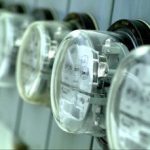 As landlords and property managers, we are always looking for way to increase Net Operating Income (NOI) for the long term profitability of an multifamily asset. In my previous post, we discussed the possibility of raising apartment rents despite the obvious recession situation. Increasing rents, however, is only one way to improve your revenue flow. Another method to is to take a look at the current utility scheme of your building: is it “all utilities paid by owner” or have all or some of the utilities been sub-metered and the costs
As landlords and property managers, we are always looking for way to increase Net Operating Income (NOI) for the long term profitability of an multifamily asset. In my previous post, we discussed the possibility of raising apartment rents despite the obvious recession situation. Increasing rents, however, is only one way to improve your revenue flow. Another method to is to take a look at the current utility scheme of your building: is it “all utilities paid by owner” or have all or some of the utilities been sub-metered and the costs
passed on to the residents?
In general, most newer buildings will already be built with
individual electrical meters so that residents are responsible for their
own power use. The opportunity to convert to individual meters usually
lies in apartment buildings that fall into the “older construction”
category, which is the focus of this discussion. If you have a
multifamily apartment building that has not yet been sub-metered,
installing individual electric meters is an excellent option to help
decrease utility expense and increase your bottom line. The conversion
process is not difficult and – if done correctly – can be very cost
effective. Our property management company has been able to contract
the installation of electrical sub-meters at a cost of $350 to $600 per
unit here in Los Angeles. Check with your local licensed electrician
for more details.
Once the sub meters have been installed on
your investment property, you will need to adjust the rent amount that
your residents are paying. This decrease in rent is to compensate
occupants for the fact that management is no longer paying their
electric bill and that the cost will now be incurred by each individual
tenant. A general rule of thumb is to discount each resident’s rent by
about 70% of the average electric bill per unit. The assumption being
made here is that once the residents actually have to pay for thier
power, that they will become more conservative with their energy use by
a factor of 30%. (Disclaimer: these averages are based on sheer
experience. I do not have a source to cite other than the hands on
knowledge of our Rob Freedman, First Light’s Broker and real estate
expert). Here is a quick example to help clarify my point:
Let’s
say that the average electric bill per unit is $80. $80 x 70% = $56,
which means that you will want to reduce the rental rate of each of your
units by $56. The result? You, as owner, will realize an instant
operating expense savings of $24/unit/month. If our example is applied
to a 100 unit building, your yearly revenue will be increased by
$28,800.
Does this make sense from a financial point of view? In
my opinion yes, if you are planning keeping the building for another 3+
years. Have we created some resident turnover when these sub meter
conversions have been implemented? Yes. But the turns were expected by
the principals and planned for accordingly. Let’s face it, some folks
just prefer to have “all utilities paid by owner” and will move on to
buildings that offer such. Overall, the building became more
profitable. What are your thoughts on sub metering out your
master-metered properties? Is it a bad time to discuss such
improvements in the midst of a recession?
-Trevor
